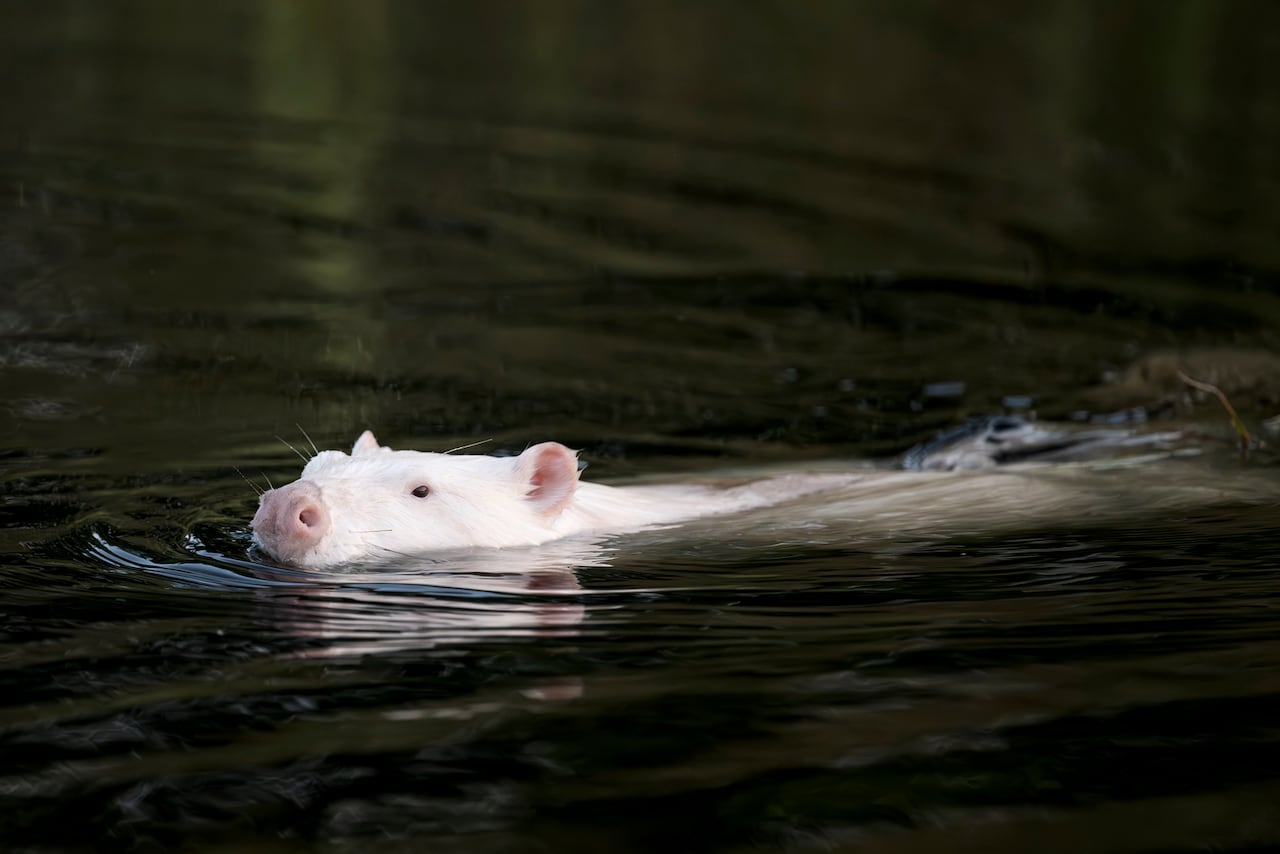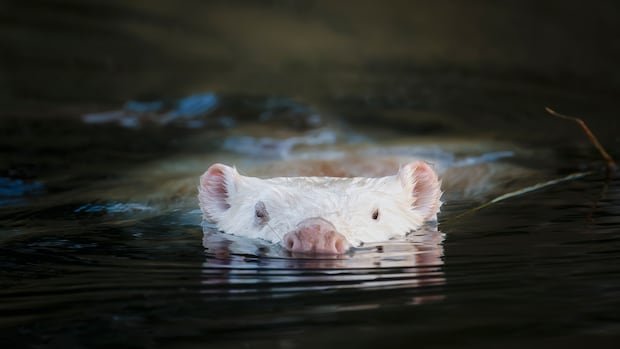On a river near Perth, Ontario, a boat full of wildlife photographers silently stalked their prey on a recent fall afternoon.
With an electric trolling motor providing propulsion, the water remained flat as they glided upstream. But then a splash like a gunshot was heard as the target’s tail hit the water and the creature dove beneath the surface.
The mythical white beaver had smelled them.
Ottawa photographer Dennis Jackson never expected to see such a rare creature, despite spending his entire life capturing images of wildlife.
After seeing the white beaver on a boat trip with his neighbor a few weeks ago, Jackson was eager to return to the river with eminent Canadian naturalist Michael Runtz, his wife Britta Runtz, who is also a professional photographer, and a CBC reporter.
Beyond hoping for another sighting, Jackson wanted to answer one question: Was this beaver albino (which would be an unlikely survival story given that most albino animals are nearly blind) or leucistic, a genetic condition that causes a partial loss of pigmentation?
The white beaver had appeared again at dusk, but after sniffing out the humans it was unclear whether it would stay to answer the question.
As photographers waited with bated breath, the white beaver passed the boat underwater, its pale tail flickering, before surfacing through some reeds. The creature then climbed onto the ground to groom its fur, revealing a patch of dark fur on its left front paw and eyes that were distinctly dark.
“With true albinism, no dark pigmentation can occur, so the eyes are always pink, so I would say it is a leucistic beaver,” Runtz concluded.
The recently retired Carleton University professor was delighted by the sighting.
“Seeing a completely white beaver with dark eyes and dark legs, it’s amazing!”
Even better, they had the photographs to prove it.
“I’m really happy just looking at it, if I hadn’t taken pictures I’d be almost as happy. But I have to admit I’m also a little happier that we managed to take pictures,” Runtz said.
Like other wild creatures, beavers occasionally produce offspring with color mutations, but lighter coats can make them more visible to predators.

White beavers are unusual enough that the Canadian Museum of Nature has in its collection a leucistic beaver pelt that was collected in Rainy River, Ontario, in 1918.
Dominique Fauteux, a museum researcher and mammography specialist, says the rarity of white beavers suggests that in evolutionary terms it has not been a beneficial mutation.
“For millions of years, that type of mutation, that genetic mutation, hasn’t become very common,” he told CBC. “The pressure for evolution is not very strong to keep that gene in the gene pool.”
For Jackson, the scientific impact of the sighting was less important than its uniqueness.
“That’s hands down one of the coolest things I’ve ever seen,” he declared as he steered the ship toward home.









